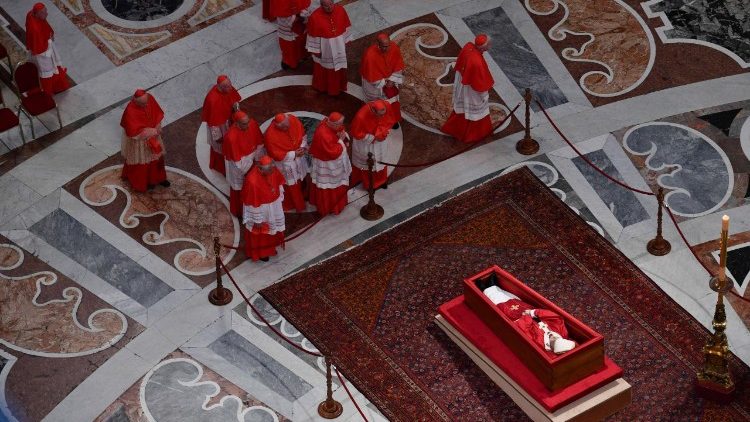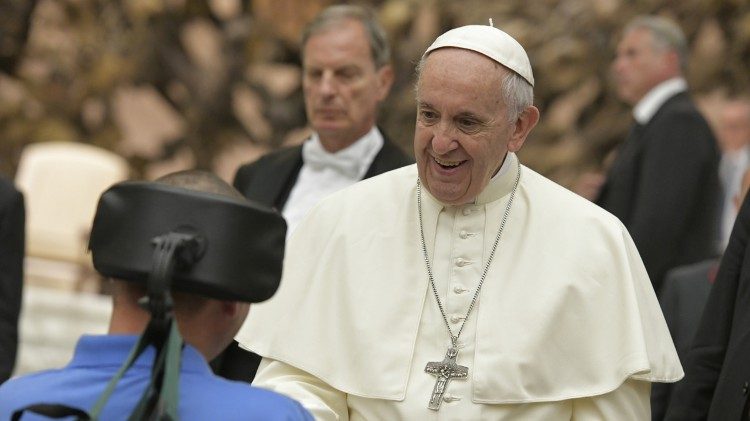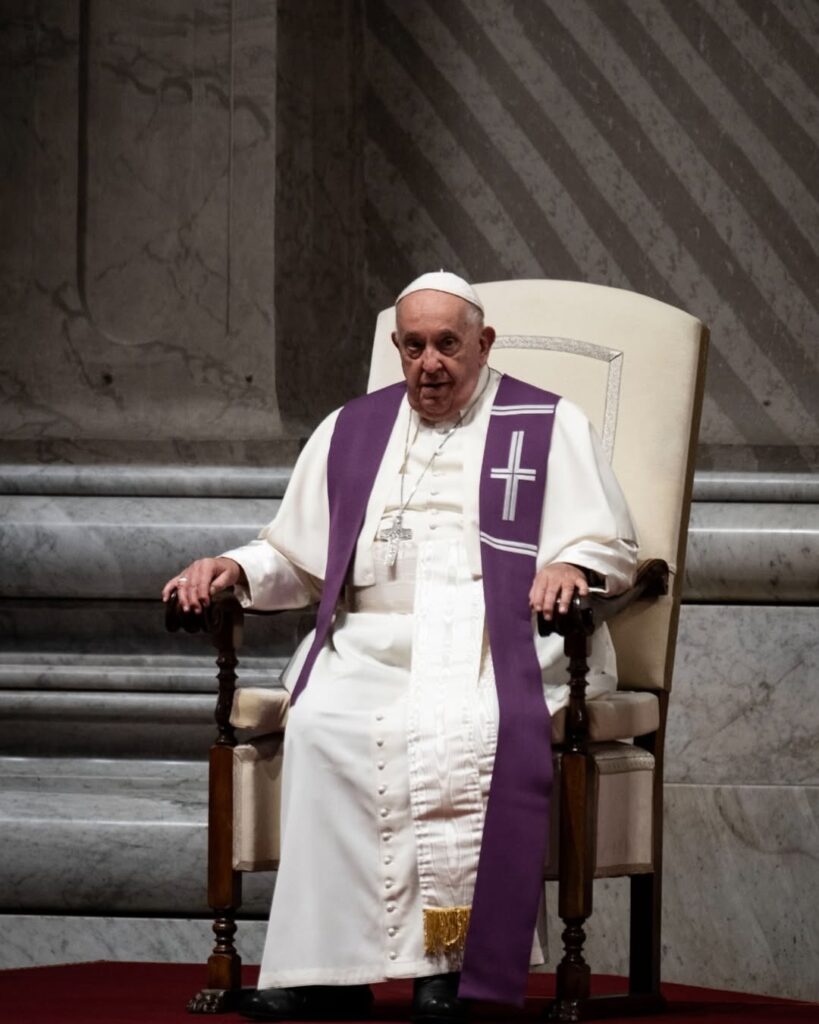“We have experienced a brilliant pontificate that has touched the hearts of believers and non-believers alike”
"The Church does not have values that change over time; its principles are born from the Gospel, and it offers them to meet the needs of the world at every moment"

The Liturgy Delegate of the Archdiocese of Valencia, Father Edgar Esteve, analyzes some of the symbols of Church tradition that we will experience in the coming days, during the funeral of Pope Francis and the subsequent celebration of the conclave, in which the next successor to Saint Peter will be elected.
“We have experienced a brilliant pontificate. Pope Francis has touched the hearts of many people, especially non-believers, who have felt connected to his message of peace and brotherhood.”
“An open path of familiarity that any successor will take advantage of, adding their imprint, specific to each pontificate, according to their concerns and worries, as well as those of the world, because we live in a society that changes at such a rapid pace that it is necessary for pontiffs to also adapt to the needs and responses that the world requires at each moment,” Esteve points out.
“A Pope’s funeral is full of symbols with a millennia-old tradition”
Over the next few days, “a whole series of symbols and celebrations will be implemented that are part of the tradition of a millennia-old Church, and although Pope Francis has made some modifications, the essential part will continue,” he notes.
One of the most significant aspects is that in the liturgy of Rome and the Vatican, the Pope’s funeral is not celebrated in purple, as we are usually accustomed to at funerals, but in red.
Pope Francis made a modification to his own funeral rite in November 2024. First, a simplification of some rites, “above all to demonstrate that he is a bishop of the Catholic Church, and to fulfill his wish to be buried in the Basilica of St. Mary Major.”
On this occasion, we will not see the Pope on the scaffold that was set up in the Vatican Basilica, where his body was publicly exposed. Instead, we will see the Holy Father directly in his coffin, already dressed in his pontifical robes, but without as much adornment as on previous occasions.
The number of wake stations has also been reduced. Previously, a wake was held first in the Apostolic Palace and then in the Vatican Basilica, where the faithful presented their respects and prayers before the pontiff. On this occasion, it will only be held in the Vatican Basilica. Therefore, the Holy Father’s body has been taken directly from Santa Marta to the Vatican Basilica for the veneration and prayers of the faithful.
Furthermore, Pope Francis will not be buried with three coffins, but only with a single one, according to his wishes. And finally, the new ritual provides for the Holy Father to be buried in a place other than St. Peter’s Basilica, where the remains of recent popes have been laid to rest.
Although some decisions are pending at the meeting of the Council of Cardinals, the funeral ceremonies will be exactly the same as those of Benedict XVI or St. John Paul II. Among them, the open Gospel on the coffin, “a symbol that the Pope has been, above all, a preacher of the Word of God.” Another ritual will be the so-called “Valedictio,” one of the peculiarities of the Pope’s funeral rite, in which both the Western Church, through its Vicar of Rome, and the Eastern Church, through its patriarchs, offer prayers for the Holy Father.
The new Pontiff will assume “one of the most difficult and complicated tasks in the world”
Regarding the election of the next pontiff, the Archbishopric’s delegate for liturgy states that “it is impossible to place a bet on who it might be.” It must be taken into account that 92 votes are required to elect a pope out of the 135 that make up the electoral college. “We are facing a process in which the cardinals will gradually see who the consensus person is among them all, who is capable of uniting the will of the vast majority to be able to elect the next pope.” “New Pope.”
The new Pope, “first of all, must gather the entire legacy of Pope Francis, his human and spiritual capital, which in turn gathers the spiritual legacy of all previous popes, and confront the new problems facing both the world and the Church.”
We are at a time when the economic situation, world peace, globalization, immigration, integration, and religious freedom in many parts of the world are issues that must be addressed and addressed.
It is a very important responsibility, and perhaps one of the most difficult and complicated tasks. With the help of the Holy Spirit and the will and support of the entire College of Cardinals, one of them will say yes to this very important mission. We as the Church will accept it, and as the new successor of Saint Peter, we will allow ourselves to be guided by him to lead us in the life of the Church.
“The Church does not have values that change over time”
For Edgar Esteve, it is a mistake to classify the members of the Council of Cardinals as liberal or conservative, because the Church does not have values that change over time. The Church has values, principles that are born from the Gospel and that the Church must always offer to the world. Therefore, the Church must be a conservative institution because it preserves a Word and preserves values that come from ancient times, from the Gospel itself and from Jesus Christ himself.
However, the fact that these values are constant in the Church does not mean that we do not have to adapt to the needs of the world at all times, because the Church’s will is to have an influence on the world to transmit its faith, and this must be done in a context in which we are sympathetic to the world’s concerns and needs.
The origin of the new pontiff should not be a determining factor, but rather an enriching one
Until practically the 19th century, the Church was practically confined to Italy, in the middle of Europe, and practically the rest of the world was dedicated to missions. Today, the advancement of Christianity and society has made the Church, in some ways, a global institution, and today there are cardinals who would have been unthinkable a hundred years ago. We have cardinals all over the world.
And whoever is elected will also put forward his biography, not as a condition, but as a way to enrich his pontificate with new concerns, new worries, also a result of his age, because, evidently, he will be a much younger person, belonging to another generation, and who, therefore, will also have other concerns, and that is always an asset for the Church.
Related

Francis. The Human and Religious Imprint of a Papacy
Isabel Orellana
24 April, 2025
5 min

A Pope’s Last Journey: Francis’ Body Transferred to St. Peter’s
Exaudi Staff
24 April, 2025
3 min

Cardinal Felipe Arizmendi: With the Risen Christ, There Is Hope
Felipe Arizmendi
24 April, 2025
6 min

You Didn’t Give Up
Exaudi Staff
23 April, 2025
2 min
 (EN)
(EN)
 (ES)
(ES)
 (IT)
(IT)

